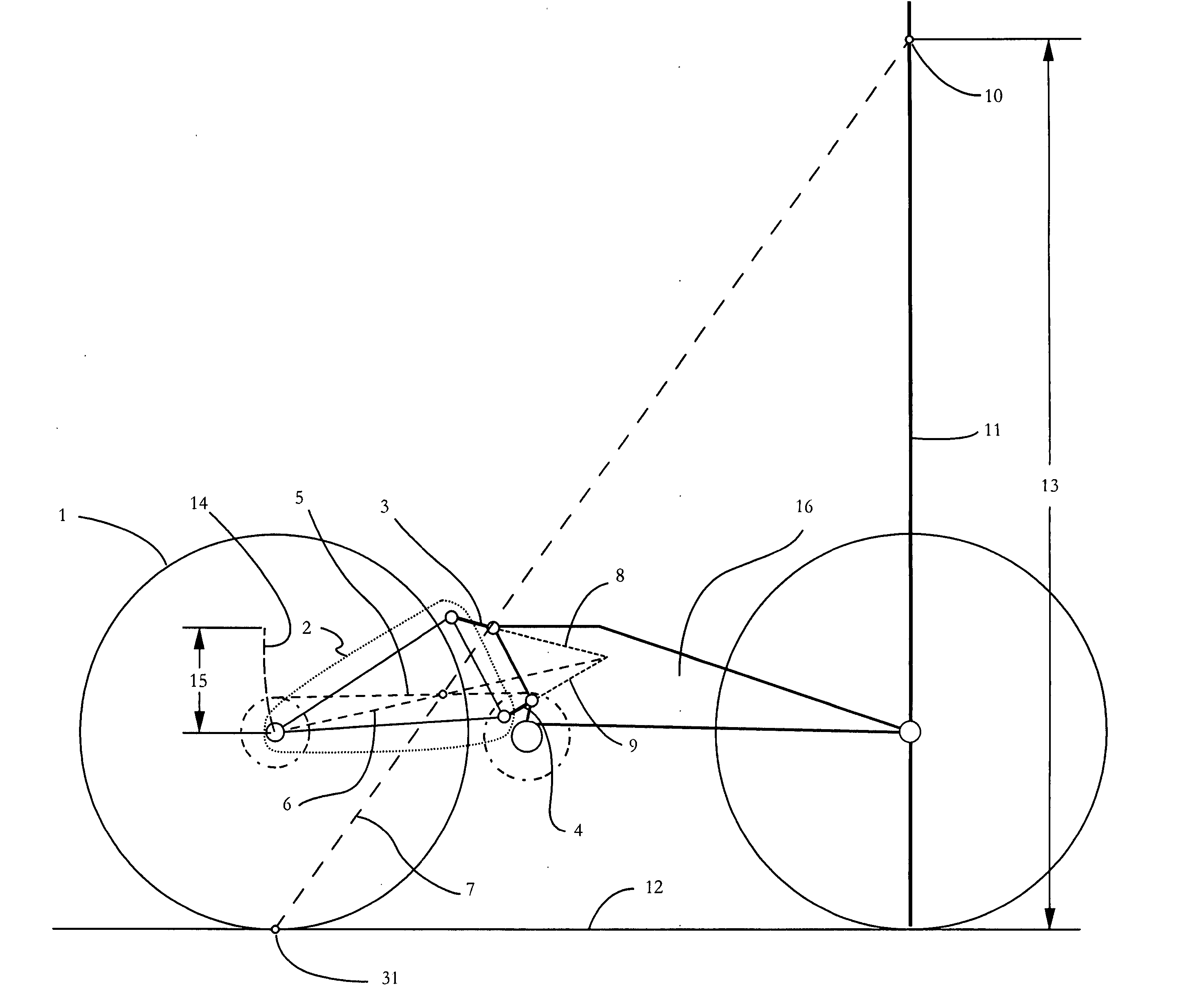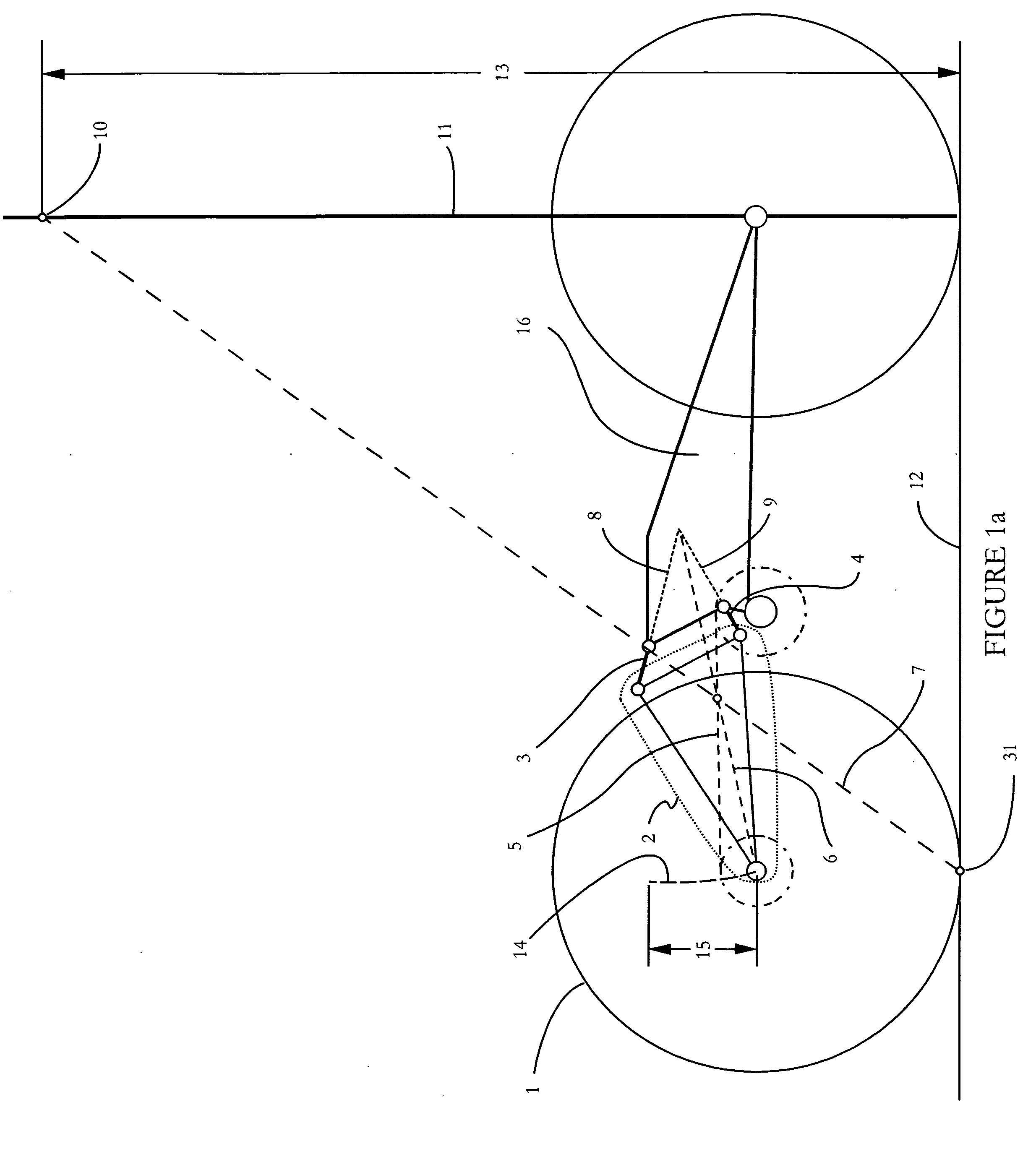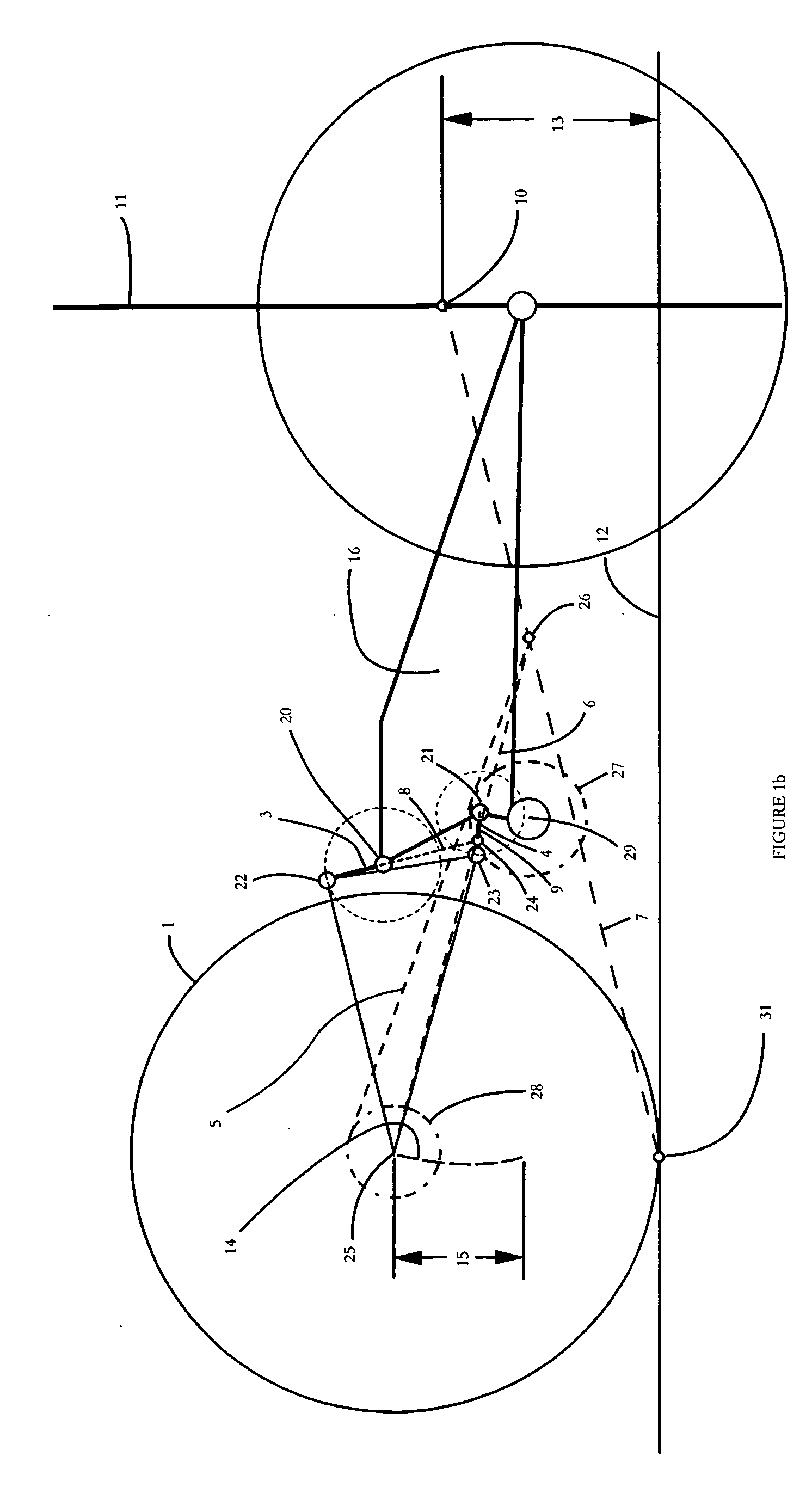Vehicle suspension systems
a suspension system and vehicle technology, applied in the field of suspension systems, can solve the problems that small power loss can have a significant detrimental effect on rider performance and comfort, and achieve the effects of facilitating squat response, lowering energy loss resulting from squat, and facilitating squat respons
- Summary
- Abstract
- Description
- Claims
- Application Information
AI Technical Summary
Benefits of technology
Problems solved by technology
Method used
Image
Examples
Embodiment Construction
[0028] Vehicles must be accelerated against their environment to propel an operator or rider across terrain. In order to accelerate these vehicles, a certain amount of energy must be exerted and transformed into rotary motion at a wheel or plurality of wheels. Suspended wheeled vehicle energy conversion types are widely varied. Some vehicles like bicycles, tricycles, and pedal cars use converted human energy as the drive unit. Other vehicles use electric motors or combustion engines, as their drive unit. These electric motors and combustion engines extract rotary motion through the controlled release of chemically stored energy.
[0029] Almost all vehicle types use some sort of rotary motion transmission system to transfer rotational force from a drive unit to a wheel or plurality of wheels. A simple bicycle or motorcycle or all terrain vehicle uses a chain or belt to transfer power from a drive unit to a wheel. These chain or belt drive transmissions typically use one sprocket in th...
PUM
 Login to View More
Login to View More Abstract
Description
Claims
Application Information
 Login to View More
Login to View More - R&D
- Intellectual Property
- Life Sciences
- Materials
- Tech Scout
- Unparalleled Data Quality
- Higher Quality Content
- 60% Fewer Hallucinations
Browse by: Latest US Patents, China's latest patents, Technical Efficacy Thesaurus, Application Domain, Technology Topic, Popular Technical Reports.
© 2025 PatSnap. All rights reserved.Legal|Privacy policy|Modern Slavery Act Transparency Statement|Sitemap|About US| Contact US: help@patsnap.com



